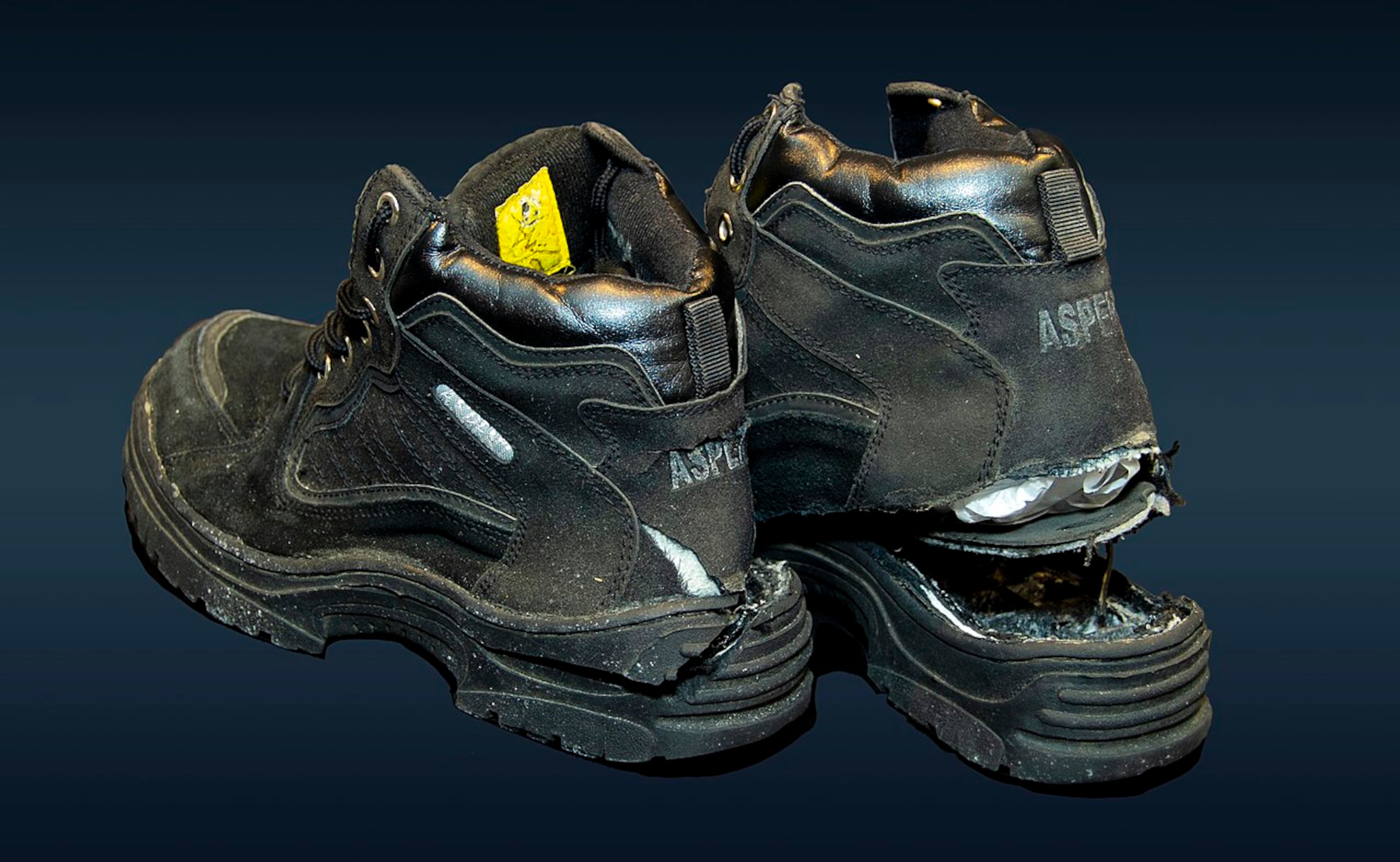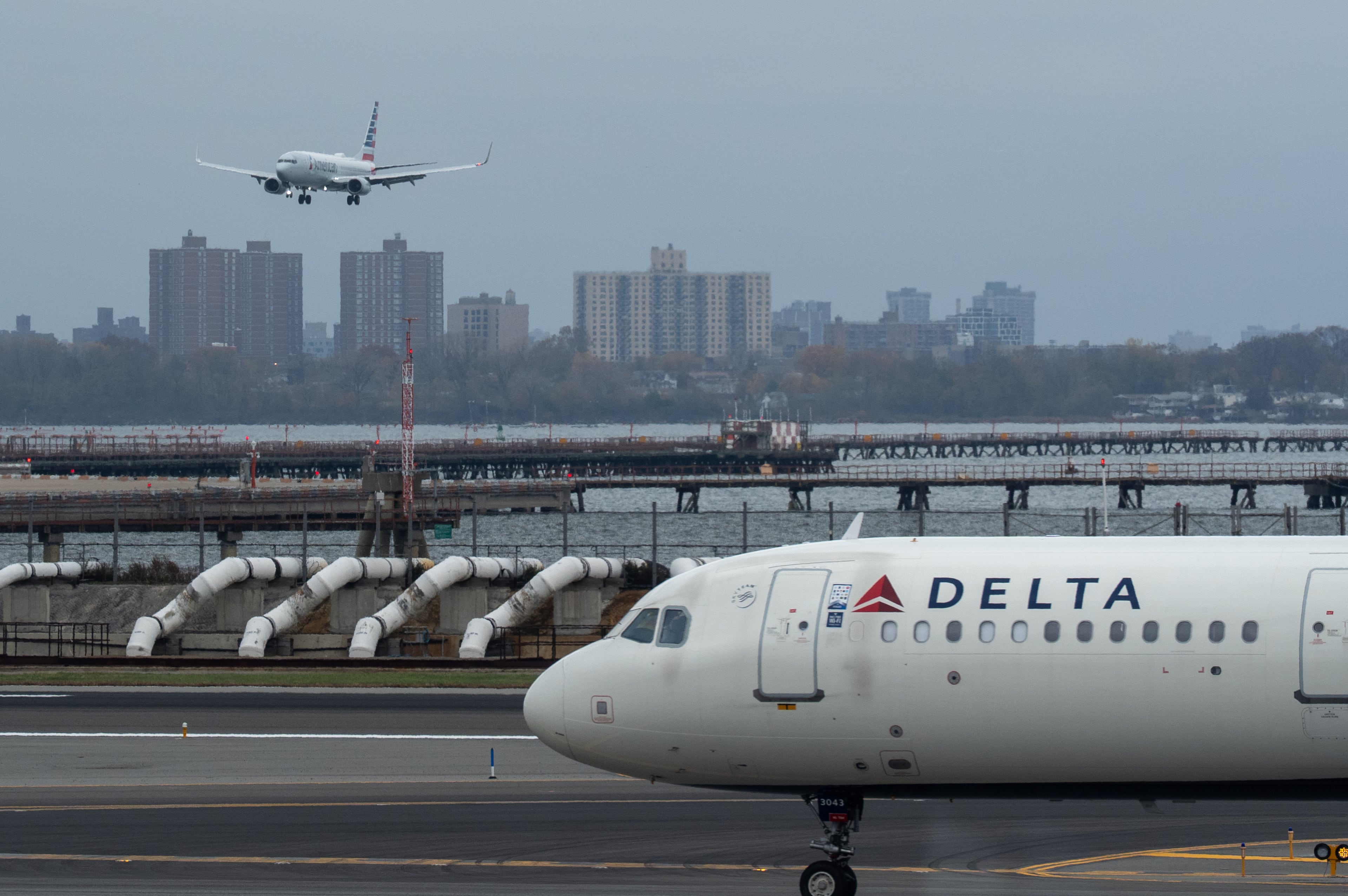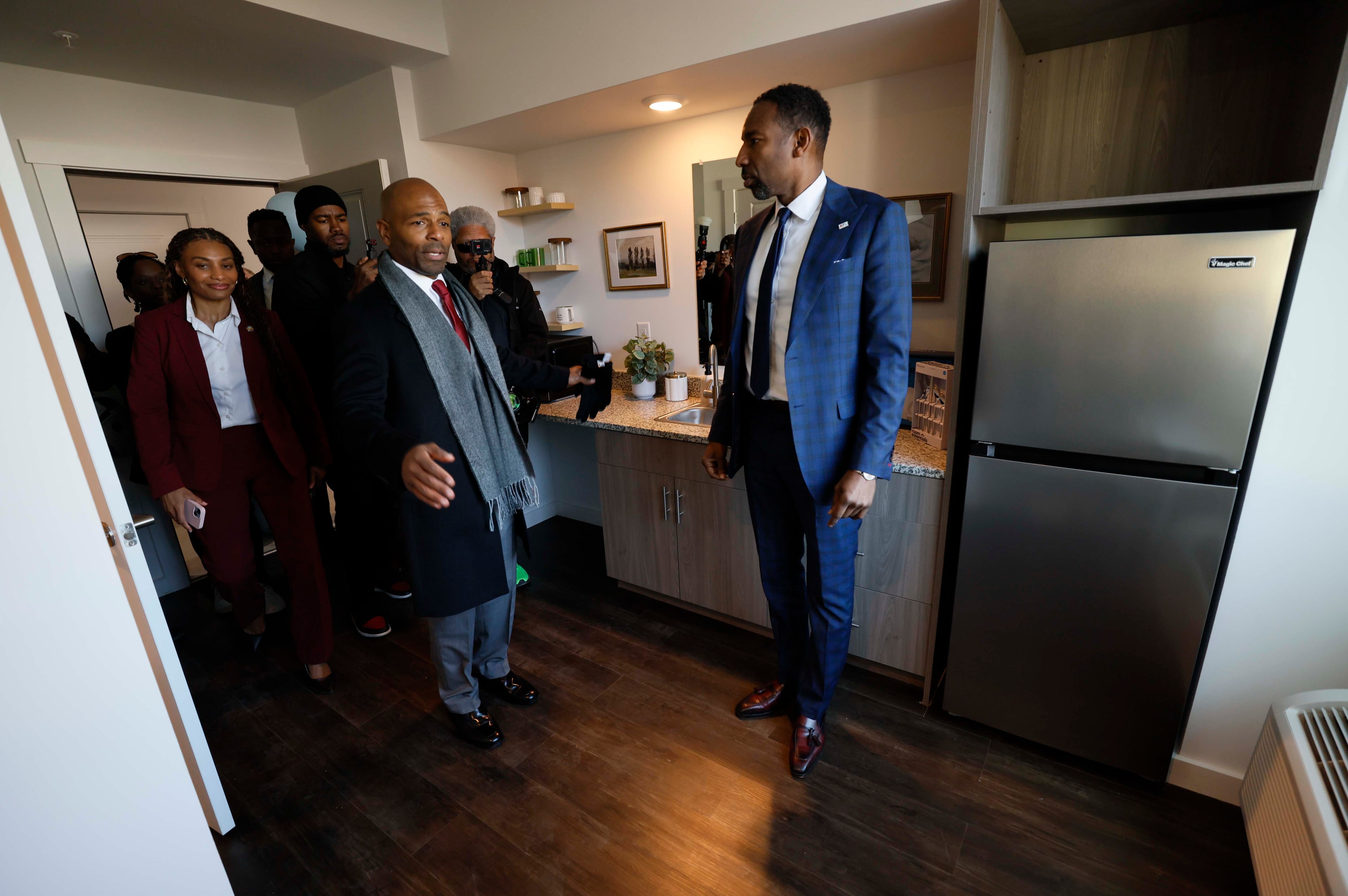The shoes finally come off TSA’s ‘security theater’
The reports trickled in last Monday morning from a handful of airports, including Hartsfield-Jackson: the Transportation Security Administration wasn’t making people take off their shoes.
“It started happening all of a sudden, in places like Atlanta, JFK (in New York) and LAX (in Los Angeles),” said Joe Brancatelli, the longtime editor of the business traveler site JoeSentMe.com.
A day later, the Department of Homeland Security announced the change.
On Tuesday, DHS Secretary Kristi Noem said ending the shoes-off policy would trim wait times and “modernize and enhance traveler experience.”
The “cutting-edge technological advancements and multi-layered security approach,” she said, would “usher in the president’s vision for a new Golden Age of American travel.”
One travel expert estimated this could cut security wait times by 5% to 10%. That means the post-9/11 rule of arriving two hours before takeoff might now be just an hour and 50 minutes.
Golden Age, indeed!
Why did Team Trump do it?
First, it’s a good idea. Second, his Department of Homeland Security sure could use some good news following the nonstop coverage of cruel immigrant roundups and criticisms of delays before helping Texas flood victims.
Why not gin up some good news? Brancatelli said the shoes-off policy was “security theater.” That is, the act of performing policies that make it look like you are keeping people safe, but with no idea if they actually work.
Dropping the policy, he added, “is performative government.”
The shoe rule came about because of a radicalized dope named Richard Reid. In December 2001, just three months after 9/11, Reid tried to light a fuse in his soggy tennis shoes, which contained a homemade bomb. Fortunately, he had walked around wet streets before boarding his flight from Paris to Miami.
Did TSA, America’s then brand-new security bureaucracy, quickly react to stem this new threat? No.

The shoes-off policy came nearly five years later in 2006 after Islamic terrorists in London planned to sneak liquid explosives on to planes. So, shoes-off went into effect along with the 100-milliliter (or 3.4 ounce) limit on liquids in carry-on bags.
(One should assume the 100-milliliter limit will also soon end. I figure President Donald Trump is annoyed by the metric system, as are all true Americans).
The 9/11 attacks instilled paranoia in America. In 2003, one of my twins, then 6 years old, brushed the airport metal detector with his hand. I heard a hubbub and saw TSA agents converging on him like he was Reid’s small redheaded cousin.
My instinct was to intervene. I turned back toward him and was met by a loud TSA agent in my face. “Get back! Get back!” he warned.
There was a feeling at the time we have to do something. Anything.
This became known as our New Normal. Americans, by nature, push back against authority. But complaining in the TSA line might earn you a federal case. So we put our heads down and shuffled through.
Since then, probably more than 10 billion shoes have been tossed into bins at security checkpoints, that is if you consider more than 700 million Americans have flown most years since 2006.
In 2009, an underwear bomber tried to fire himself up on a plane headed for Detroit. Thankfully, TSA didn’t make us shed that garment at checkpoints.
A question has always lingered: Just how effective is all this?
I Googled, “Has TSA stopped a terrorist attack?” The search engine’s AI responded: “While it’s difficult to definitively say if the TSA has stopped a terrorist attack, as their successes are often not publicly disclosed, there’s no publicly available evidence to confirm they have.”
As my computerized friend suggests, it’s hard to prove a negative. There hasn’t been another 9/11 or anything remotely like it — at least concerning airplanes in America. But consider semiautomatic rifles at churches, nightclubs, retail stores and schools and, well, that’s another story.
TSA does point out it found 5,028 firearms in the first nine months last year at checkpoints, with Atlanta consistently coming in first place in the airport arms race.
In 2015, agents posing as passengers got weapons past TSA 67 out of 70 times. Or 95%.
That’s right, TSA caught just 5%.
Two years later, TSA improved: They found 30% of the mock knives, guns and explosives.
I asked security analyst, and longtime TSA critic, Bruce Schneier about TSA effectiveness. He’s the fellow who first coined the term “security theater” in his 2003 book, “Beyond Fear: Thinking Sensibly About Security in an Uncertain World.”
“How many terrorists has it caught, or deterred?” he asked. “Probably zero.”
Schneier said focusing on shoes and liquids really isn’t the point. He noted that after 9/11, cockpit doors were reinforced and locked (and are now largely bulletproof), so hijacking a plane and converting it into a guided missile is extremely improbable.
Besides, passengers now fight back, as they did on 9/11 and with the shoe and underwear bombers.
It’s rare for a bureaucrat to pull the plug on something like the shoes-off policy, “even if it makes no sense,” Schneier said. There’s always the chance something could happen.
Cost-benefit analyses of TSA have shown it costs tens of millions of dollars per potential life saved — going as high as two-thirds of a billion dollars. “Airport Security: Astoundingly Expensive and 95 Percent Ineffective,” is how Bloomberg put it.
And now, the curtain is finally coming down on this act of the security show.



